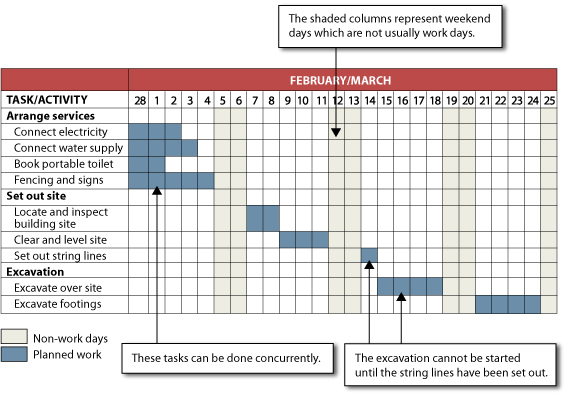Introduction
Bar or Gantt charts are another commonly used way of graphically representing a project schedule. Gantt charts are named after Henry Gantt who used bar charts extensively in the Second World War to plan the scheduling and control of military operations. For most purposes, bar and Gantt charts are the same thing.
A typical bar chart consists of columns and rows. The left column contains the task list. The other columns represent time intervals - days, weeks, months or years. The duration of each task is shown by drawing a horizontal bar along the timescale, starting at the date when that task should start and finishing at the date by which the task should be completed.
Sample Gantt chart for a residential construction project

Relationships and dependencies between tasks are shown graphically by the positioning of the bars. For example two parallel bars indicate that two tasks will be done at the same time. One bar following another indicates that the task associated with the first bar must be completed before the task belonging to the second bar can be started.
Where resources (eg labour and equipment) allow, project managers often aim for work to be done on two or more tasks at the same time in order to shorten the overall duration of the project.
